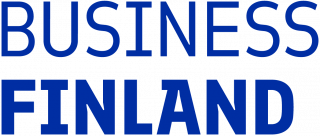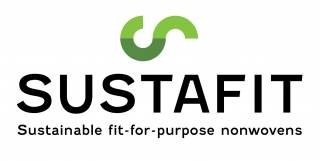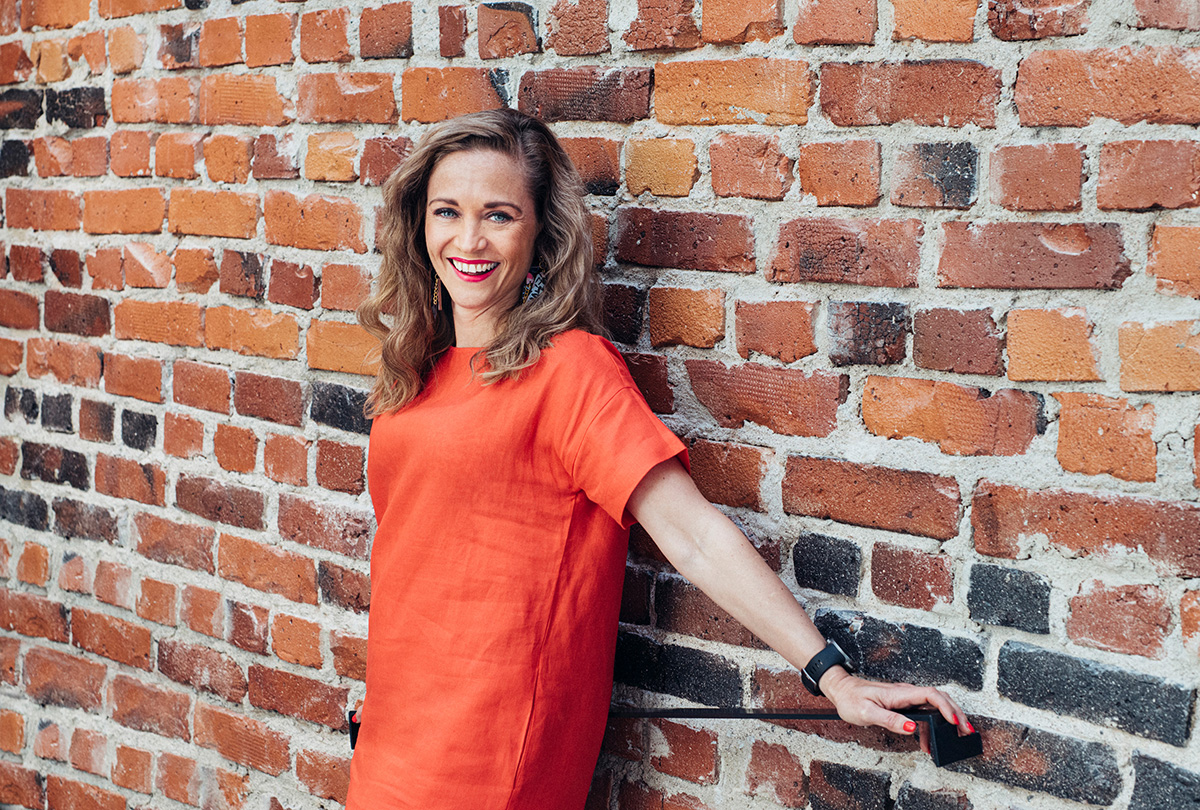Companies are transitioning towards digital platforms to reach the full potential of digital transformation in enabling circular economy and facilitating the evolution of circular ecosystems. In this, understanding of value networks and platform economy is crucial.
The Sustainable fit-for-purpose nonwovens (SUSTAFIT) project has organized a series of collaborative workshops to get perspective from companies and, as well, to share knowledge. Dr. Pia Hautamäki, Principal Lecturer, Researcher in Applied Research Center at Tampere University of Applied Sciences (TAMK) and Adjunct Professor at University of Eastern Finland, is leading the SUSTAFIT project.
“The project encourages participating companies to explore the benefits and challenges of integrating sustainability into nonwovens industry, and, engaging in interactive discussions and gaining insights from industry experts”, says Hautamäki.
“For companies it is vital to learn how to incorporate sustainable nonwovens in products and processes. Driving positive change and creating a greener future is our joint mission”, she adds.
The role of business models is critical
Hautamäki knows well the opportunities and challenges of platforms in value creation. In business to business, B2B, customers’ buying journey is often complex.
There are lot of innovations and transformation in business models. According to Hautamäki, a digital platform is a new business model that connects people, organisations, and resources through technology in an interactive ecosystem in which incredible amounts of value can be created and shared.
“We are getting towards digital platforms. We study several aspects in sustainable nonwovens: how customers are buying, are we really adding value, and what is our value proposition in this digitalised and highly complex environment. Furthermore, is our value proposition formulated so that sustainable nonwovens will end up to customers’ acceptance?”
Recent studies have shown that a business model’s ability to provide realizable value for the customer determines the company’s likelihood of remaining in the market.
“Digital technologies have a key role in enabling circular economy principles in business. Digital technologies drive business model innovations, fostering value creation within circular economy principles”, she states.
Companies are transitioning towards digital platforms
There are different types of digital platforms: e-commerce, content creation, business collaboration, knowledge, learning, social media, gaming as well as finance, transportation, travel and healthcare related platforms. Certain platforms have similarities, and the boundaries are not that strict.
Companies are adopting digital platforms in reaching the full potential of digital transformation.
“As consumers we have already been using these platforms. In B2B, the number of platforms is growing. As business leaders we must make business models related decisions if we want to boost the growth in our companies”, Hautamäki emphasizes.
A lot of data is available, but we still have challenges to transit to this new world. We are approaching a time where everything can be tracked and quantified. For humans, however, the challenge will be to effectively utilize, interpret and comprehend the information.
Unlearning is vital as well. Many companies still struggle to realize the vision of becoming a technological, data-driven organization. In 2024 Data and AI Leadership Executive Survey 92 percent of respondents said that the biggest reason of not becoming a data savvy company was culture. To change that, CEOs should be encouraging their teams to embark on a journey of discovering new ways to improve and take their business in a fresh direction.
What about the nonwovens industry?
The nonwovens industry is still operating with single-use products. Hautamäki encourages companies to explore together with research organizations how a sustainable transformation with digital technologies and platforms can be boosted. Addressing the future endeavours is a complex task.
What challenges need to be addressed to accelerate the digitalization of sustainable nonwovens? The majority of the workshop participants say that the integration of eco-friendly materials, technological innovations and investments in research and development are they key.
How are digital technologies connected to the nonwovens industry?
In her studies with multinational organisations, Lisa Arianna Rossi, Doctoral Researcher from Centre for International Manufacturing, Institute for Manufacturing and Management, University of Cambridge, has concentrated on the role of digital technologies in circular supply network configurations.
Digital technologies are enabling circular supply networks through product life cycle traceability. Rossi says that there are, however, challenges and opportunities presented by digital technologies in enabling a circular economy and the role of digital platforms in facilitating the evolution of circular ecosystems.

Circular economy requires system level change and ecosystem involvement.
“Digital platforms and supporting technologies facilitate the evolution of circular ecosystems. Cross-functional integration between IT and operations needs to be driven by strategic objectives from management”, Rossi says.
Her research has shown that the textile industry faces specific challenges in integrating digital technologies. There’s difficulty of getting products back for circulation, lack of volumes for recycling and the difficulty of sorting textiles: where do the textile materials go and how to get them back for sorting? Digital and reselling platforms can help address these challenges.
Digital technologies can be used in different stages
Digital technologies can help along the way: from design stage to design modelling, from through-life decisions to data integration and from lifecycle impact to data visibility.
Lisa Rossi is interested in transparency versus traceability. Transparency-wise there is a need for high-level supply chain information on product components, names of suppliers, location of facilities, and certifications and accreditation. Traceability-wise data on each individual product is valuable: sourcing origin, chemical composition of specific materials, purchase order data and operational information.
The opportunities are big, and so are the problems
As per resources we are currently using 1,75 Earths and generating waste 2,12 billion tons per year. Net zero emissions targets by 2050 are addressed through energy and manufacturing transitions.
Opportunities lie in combining waste and information as a resource: digital technologies provide product life visibility, necessary information on resource flow and product condition as well as means for knowledge sharing across network actors. Key questions are, according to Rossi, how can traceability technologies enable transition to a circular economy.
There are challenges and bottlenecks in digitalization also in industries where the processes are mature. The digital and reselling platforms can give valuable insight and data. Lisa Rossi recognises the enabling role of legislative and digital drivers in supporting companies on their journey towards more sustainable products and processes. For her it is interesting to see how the landscape is evolving.
SUSTAFIT research project is established for a need of Finnish industry in nonwovens. In the Business Finland funded project three research organisations – Tampere University of Applied Sciences (TAMK), Aalto University and VTT Technical Research Centre of Finland – are supporting Finnish industry to understand how environmental sustainability of the nonwovens can be improved. 17 companies are participating in the project. The two-year project (starting 1st October 2022) is coordinated by TAMK and steered by the industry consortium.
Text: Hanna Ylli
Photo of Pia Hautamäki: Laura Tammisto
Photo of Lisa Arianna Rossi: Maruf Sarkar



